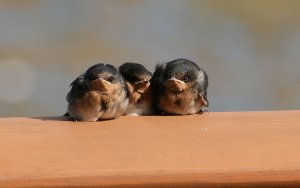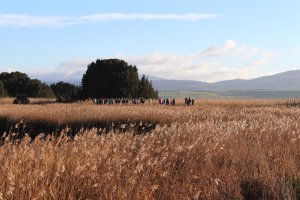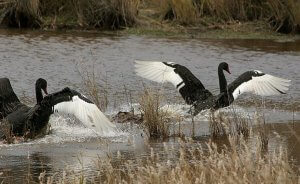The Tamar Island Wetland Centre – Nature’s Paradise
On the outskirts of Launceston, the Tamar Island Wetlands are spread over 60 hectares of mud flats, lagoons and islands.
Wetlands are very important
Fresh and saltwater wetlands are areas of land that are flooded by water, either permanently or at certain times of the year. They include swamps and marshes, lakes, lagoons, saltmarshes, mudflats, mangroves, coral reefs, bogs and peatlands. There are even underground wetlands.
Wetlands store and filter freshwater, provide us with food, help the international economy, as well as being an important home for a large percentage of all the plant and animal species on Earth. Wetlands also protect our shores from waves, prevent floods and store vast amounts of carbon.
Operated by the Tasmania Parks and Wildlife Service, the Tamar Island Wetlands are a haven for plant and animal life, from the vulnerable white-bellied sea eagle to the rare striped march frog and a glossy grass skink.

A wander and a gander
Visit the excellent interpretation centre to learn about the cultural and natural values of the site, before taking a stroll through the tall native grasses and over footbridges to enjoy the spectacular location and all it has to offer, including a beautiful view down the river towards Ben Lomond.
Wildcare volunteers provide visitor services, including talks, 364 days a year. Entry is by donation. For more information about opening hours it is recommended to contact PWS on 6777 2179 or 6327 3964.

The below activities are a selection of activities validated as Children’s University learning at the Tamar Island Wetland Centre.
Mini Beasts of the Tamar- entrance deck
Wetlands of all types play a major ecological role acting like the kidneys of a river system. Assessing wetlands for their macro invertebrate assemblages provide a reliable and scientifically valid method to understand how healthy a water course is. One pollution event can take out the sensitive aquatic fauna alerting managers to look further as to the likely natural or man-made impacts.
You will see how to collect a sample and then help sort the “bugs” into families using basic identification keys. The result will be that you will learn about what likes to inhabit the Tamar wetland, where they like to hide out and what they like to eat. (Activity scheduled during events)

Gambusia activity
You will be shown a short video, introducing the gambusia, the problem it causes to native fauna and the genetic solution that University of Tasmania is developing. This will be followed by hands on experience, catching fish, measuring and practicing how to tell boys from girls. You will also learn about handling fish kindly, recording measurements and writing aspects you may find, in your own words. (Activity scheduled during events)
To learn more about this incredible Learning Destination visit their website here.